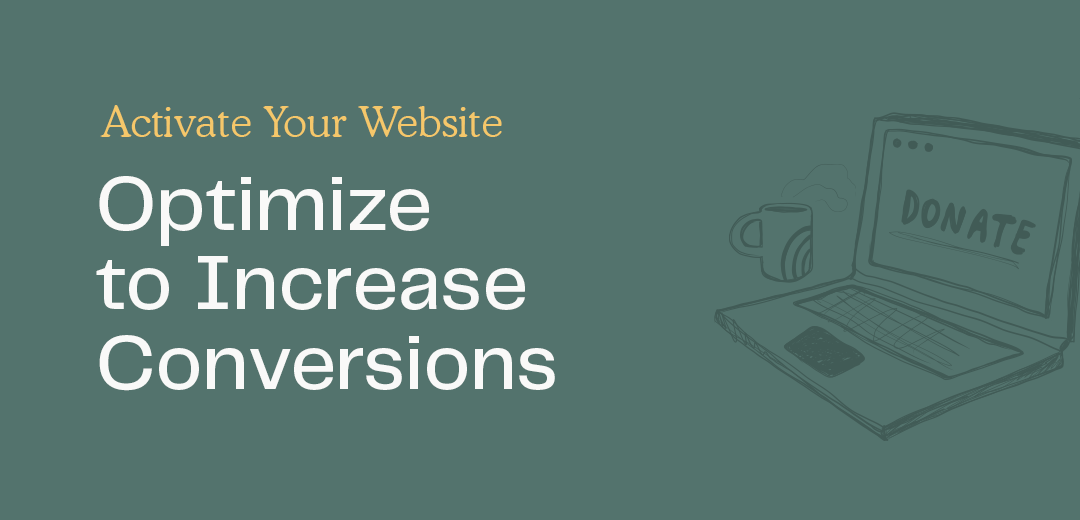Mastering Google’s EEAT Guidelines: Navigating Algorithm Updates to Fuel Your Nonprofit’s Discoverability

This blog was written in collaboration with Emily Cameron and Lauren Payne at the nonprofit marketing agency Media Cause. Emily is an SEO freelancer with a passion for helping businesses and organizations discover effective SEO strategies. Lauren is a copywriter and content manager with experience in client and internal communications, research, and project and event management.
In the modern digital landscape, search engine optimization (SEO) plays a pivotal role in the success of any online presence, especially for nonprofits. Understanding changes to Google’s algorithm is imperative for maintaining visibility and relevance.
Discover how to navigate the evolving world of SEO through a nonprofit lens. You’ll also learn how your organization can adapt to Google’s constant algorithm shifts using the experience, expertise, authoritativeness, and trustworthiness (EEAT) guidelines and insights below.
Updates to Google’s Search Algorithms
Google frequently fine-tunes its search algorithms to provide users with the most relevant and high-quality content. As the algorithms shift, so does what Google prioritizes.
For example, Google used to tout Core Web Vitals as a direct ranking factor for content on the search engine results page (SERP). These web vitals encompass crucial aspects of user experience, including loading performance, interactivity, and visual stability.
While Google initially emphasized these metrics, it has now revised its stance, deprioritizing Core Web Vitals as a ranking factor.
The Ever-Changing Search Landscape
Change is constant in the world of SEO. So, rather than fixating on a single metric, shift your focus toward the broader picture of providing an exceptional user experience as the key to a successful strategy.
In the wake of Core Web Vitals’ deprioritization, it’s more necessary than ever to return to the foundational principles of SEO. This means ensuring your website is fast, responsive, and visually stable. It also extends to other crucial elements of SEO involving creating high-quality, informative content that genuinely addresses the needs and interests of your target audience.
By placing user experience at the forefront, your nonprofit can establish a strong foundation for long-term success, irrespective of the shifting sands of Google’s algorithms.
Remember, SEO isn’t solely about pleasing search engines. It’s about delivering real value and quality content that remains relevant for the long term.
What Are the EEAT Guidelines?
At the heart of successful SEO lies the art of creating content that not only caters to user intent but also exudes trustworthiness. In its pursuit of delivering the most relevant and reliable information to users, Google introduced a set of criteria known as the EEAT guidelines.
Defining EEAT—Building Credibility in the Digital Realm
As Google’s gold standard for evaluating content quality and reliability, the EEAT guidelines revolve around the following four key pillars:
- Experience: The content shows the creator’s first-hand experience with the subject matter.
- Expertise: The content demonstrates a deep and comprehensive understanding of the subject matter.
- Authoritativeness: The content establishes your organization or website as a credible and reliable source within your field.
- Trustworthiness: The content ensures accuracy, transparency, and security that users can rely on.
Adhering to these guidelines not only instills confidence in your audience but also positions your nonprofit as a respected authority in your domain. The EEAT guidelines also deliver a timeless strategy that transcends algorithmic shifts, providing a solid foundation for your SEO endeavors.
Why Should Nonprofits Invest in SEO?
Investing in SEO yields several benefits for nonprofits, including:
- Driving donations: A well-optimized website increases the chances of attracting potential donors, ensuring your cause gets the financial support it needs.
- Increasing cost-effectiveness: SEO is generally a low-cost endeavor, making it an attractive option for nonprofits with limited budgets. It offers a high return on investment in terms of increased visibility and engagement.
- Raising awareness: By ranking higher in search results, your nonprofit can effectively spread awareness about its mission and goals to a broader audience.
- Providing educational content outreach: Through SEO, nonprofits can share educational content with a wider audience, providing valuable information and resources to those who seek it.
SEO Tactics and Tips
In the dynamic world of SEO, mastering the right tactics is the key to unlocking your nonprofit’s online potential. Enhance your website’s performance and visibility with these strategic maneuvers:
- Site health: The overall well-being and functionality of your website, encompassing factors like page-loading speed, mobile-friendliness, secure connections (such as Secure Sockets Layer), and absence of broken links.
- Business listings: Ensuring your organization’s information (name, address, and phone number) is consistently and accurately listed across various online platforms, including search engines, directories, and social media.
- On-page and technical SEO: Optimizing individual web pages to improve search engine rankings. Technical SEO focuses on back-end elements, like site speed, mobile-friendliness, and structured data.
- Keyword strategy and research: Identifying and targeting relevant keywords that potential visitors use to search for information related to your nonprofit’s mission.
- Content strategy: A well-defined content strategy involves planning, creating, and distributing content that resonates with your target audience and aligns with your nonprofit’s mission and values.
By diligently applying these tactics, your nonprofit not only enhances its SEO efforts but also boosts its rankings and aligns with Google’s EEAT guidelines.
7 Things to Do for SEO Before Hitting Publish
Before you click that publish button, there are several steps to ensure your content is well-optimized for search engines. These pre-publishing tasks can significantly affect how your content performs in search results.
- Comprise a focus keyword: Identify a primary keyword that aligns with the content’s intent, falls in the easy-to-moderate keyword difficulty range, and has an appropriate search volume.
- Understand search intent: Tailor your content to match the specific needs of searchers.
- Employ keyword usage: Incorporate the focus keyword and variations naturally throughout the content.
- Incorporate necessary structural elements: Use headings to organize content for readability and search engine comprehension.
- Use optimized title and meta tags: Craft compelling titles and meta descriptions that accurately represent the content.
- Integrate internal linking: Connect relevant content within your website to enhance user experience and SEO.
- Select a readable URL: Ensure your URL is user-friendly and includes relevant keywords.
Putting SEO into Practice When Building a Blog Post
Here’s a great example of a blog that checks all seven SEO items.
- The content uses “social media advocacy” as the identified primary keyword due to its strong monthly search volume, low keyword difficulty, and aligned intent with the blog topic.
- The content speaks directly to those looking to use social media as a tool for advocacy and provides several tips on how to do so, including examples and images.
- The keyword appears several times in the text without keyword stuffing.
- The content uses various headings to segment each tip.
- The titles help identify the key points in each section of content, and the meta description on the back end engages readers to click through to the article.
- The content has several links that go to other pages on the site via internal linking to help users continue their reading journeys more easily.
- The URL is readable, reflects the title, and includes the primary keyword: https://mediacause.com/9-tips-for-creating-a-social-media-advocacy-campaign/.
Using a tool like Yoast can help verify that you’ve checked all the items off the list above. You can integrate it directly into your website content management system, like WordPress, to check your blogs before you click publish.
Confidently Take on the Challenge
Adapting to Google’s ever-changing landscape can be a challenging task. By following these strategies and staying informed on the latest SEO trends, nonprofits can maintain their online presence and continue to make a meaningful impact in the digital world.
Remember, it’s not just about keeping up with Google. It’s about creating meaningful connections with your audience.
Whether establishing SEO best practices in your nonprofit marketing for the first time or hoping for more in-depth guidance, try partnering with an organization specializing in SEO for nonprofits. We encourage you to start with Media Cause’s SEO Services for Nonprofits to begin the process.
Additionally, to learn more, review this comprehensive SEO content guide and check out an on-demand video of Classy’s latest coaching session, which begins with a well-rounded discussion about SEO tips and how to adhere to the EEAT guidelines.
Copy Editor: Ayanna Julien

Explore Additional Optimization Opportunities with Classy Experts


